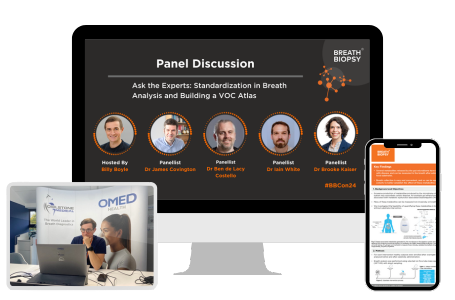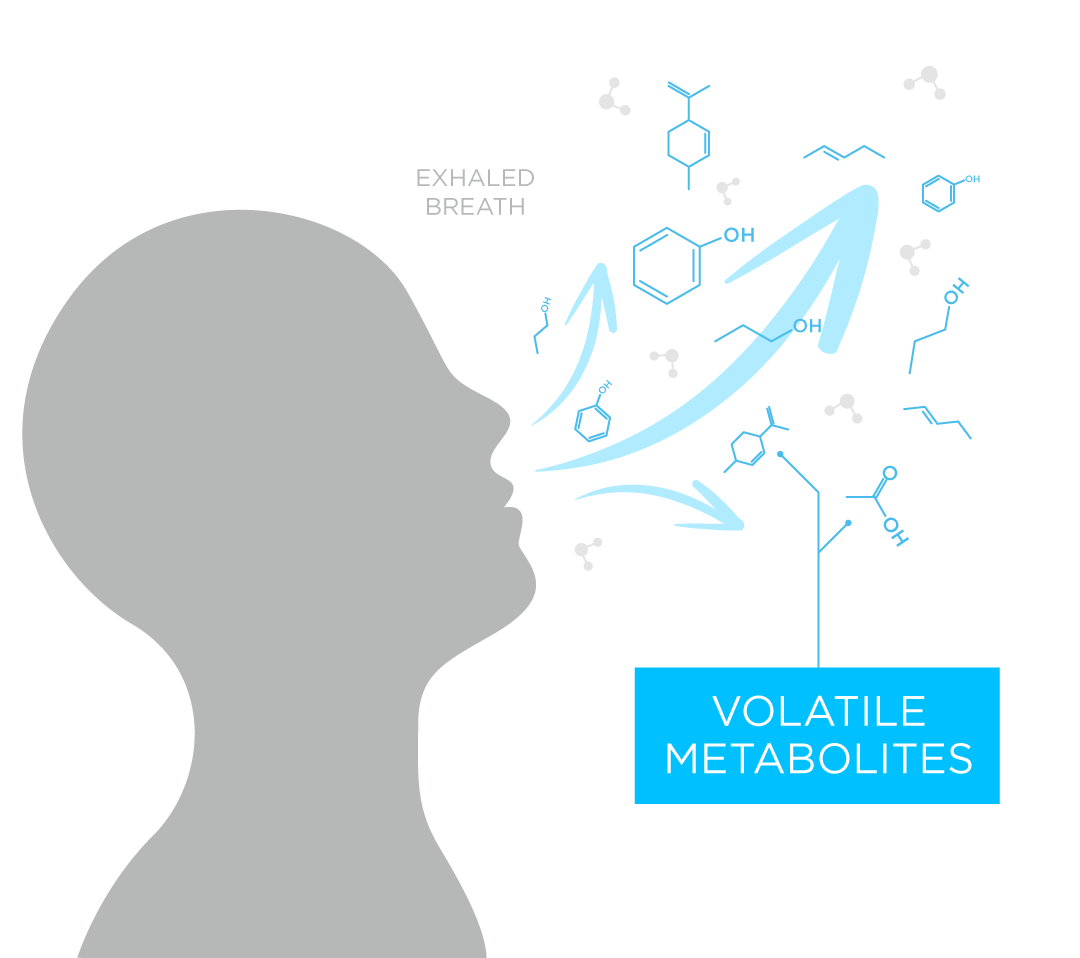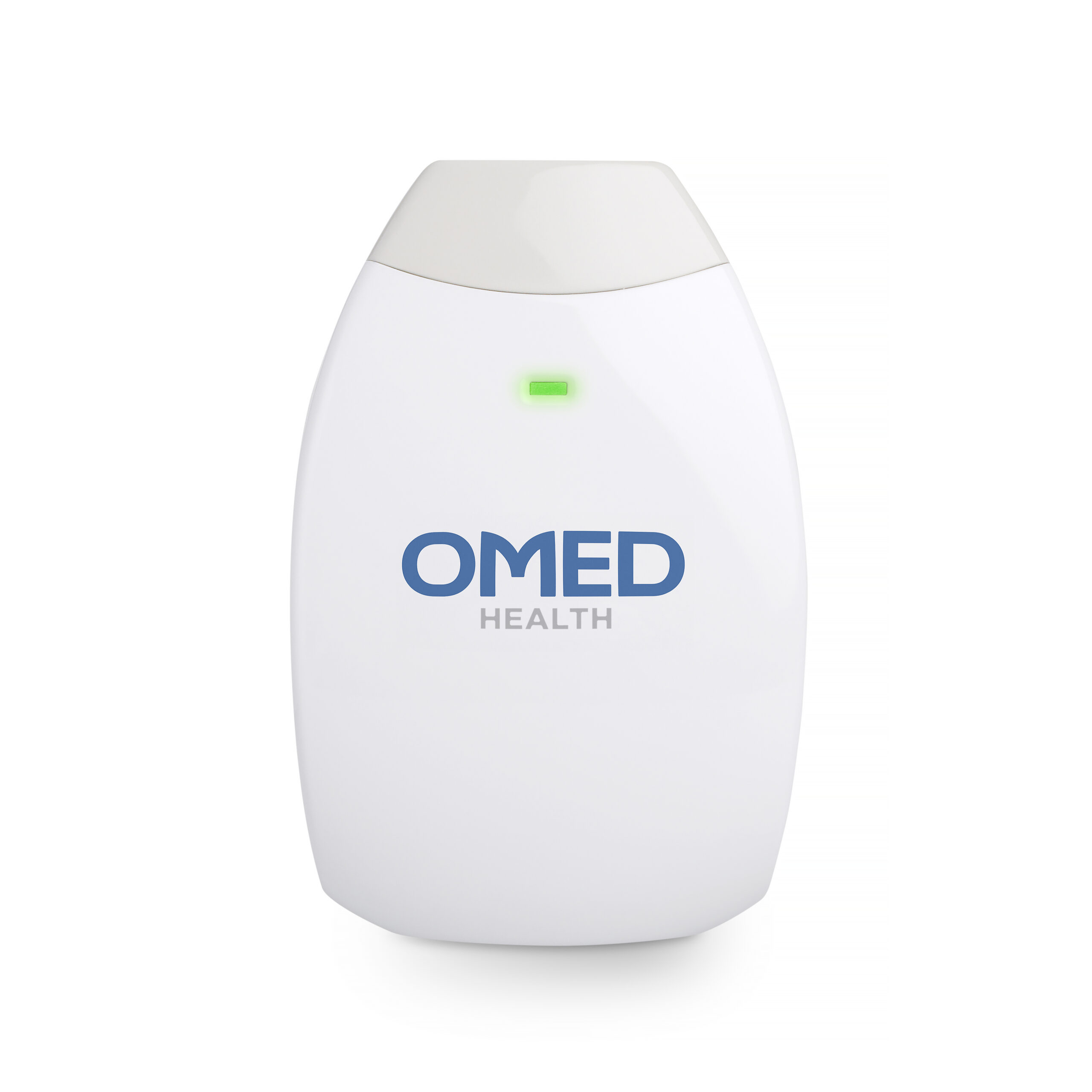Breath Analysis in Health, Nutrition, and Performance Monitoring
Published on: 25 Apr 2024
In recent years there has been a significant increase in awareness around what we eat, and especially how we can supplement our diet to maximize our well-being, increase our longevity as well and improve performance during sports and exercise.
The effects of nutrition on metabolism and how specific food components impact our health can be monitored using specific biomarkers of key processes in the body related to improving performance and boosting our health. A nutritional blood test for example can provide insight into the effects of lifestyle and diet choices and measure the levels of important markers of nutrition, such as vitamin D, iron, and omega-3 fatty acids.
However, invasive methods like blood sampling are not always desirable, especially for those who want to measure key markers on the go. This is similar in clinical trials where repeat measurements are required to be taken, perhaps to measure the effects of a certain exercise or the effects of a specific diet on participants. To reduce the burden on participants in studies aiming to investigate the effect of products that include certain health-boosting components on the body, there is a need for non-invasive assessment methods.
With each exhaled breath, a mixture of compounds is released into the air. Some of these compounds are volatile organic compounds (VOCs) which can derive from the body’s metabolism. VOCs in the breath have been related to VOCs present in blood, with several studies demonstrating similar compounds being present in blood and breath, in similar concentrations (1).
Therefore, analysis of the composition of VOCs present in exhaled breath may reveal metabolic pathways impacted by nutrition. In this way, breath analysis can identify key pathways and processes that can be used to assess improvements in health: including energy, endurance, and achieving fitness goals.
Nutrition and health.
Many endurance athletes turn to low-carb, high-fat diets to boost performance. This diet is known as the ketogenic diet, or the ‘keto’ diet, and when following the diet, carbohydrates are replaced by fat, with the goal being to promote the body’s fat-burning process. Under these conditions, fat is metabolized in preference to carbohydrates, and ketone bodies (such as acetone) are generated in the liver, leading to ketosis. This can result in exhaled breath acetone levels increasing substantially. In fact, even in healthy subjects, breath acetone has been reported to rise more than five-fold following a ketogenic diet (2).
Although moderate exercise has been shown to have many positive effects on human health, increasing the duration and intensity of exercise beyond a reasonable level in exhaustive exercise may result in negative physiological impacts on the human body (3). Being able to identify these key markers and assess them in the breath would provide a huge advantage to those who engage in extreme forms of exercise during training periods, especially marathon runners.
Our study in collaboration with the Mayo Clinic was recently published in the Journal of Breath Research and aimed to evaluate VOCs in exhaled breath that differ in abundance between samples collected before and after an ultra-marathon. The study identified potential biomarkers of exhaustive exercise present in the breath from processes such as altered gut microbiome activity. You can read all about the study here.
Healthy living plays a crucial role in avoiding the development of disease, including conditions like type 2 diabetes which are associated with a poor lifestyle. Preventative measures such as adjusting diet and regular exercise to lose weight can keep type 2 diabetes at bay, however being able to identify individuals at high risk of diabetes, or those who have higher blood sugar levels than normal, could allow those at risk to make important lifestyle changes early. In one of our internal studies, we collected breath samples from 76 volunteers including people with type 2 diabetes, pre-diabetic individuals, and healthy controls.
Four compounds – acetic acid, isovaleric acid, 3-methylindole, and methyl propenyl ketone were found to be higher in the breath of pre-diabetic individuals than in healthy controls. This means that specific VOCs in breath could be used to identify individuals who would benefit from making lifestyle changes including products or interventions to maintain their health in the long term and reduce their risk of developing certain diseases. You can read more about our study here.
Longitudinal monitoring of key biomarkers can also be used to track performance level of athletes in terms of sports endurance, with the unique attributes of breath analysis providing an avenue to do so. Exhaled breath can be collected non-invasively and on-the-go, supporting the development of remote breath monitoring devices to empower individuals to have an active role in monitoring certain key markers of improving health and performance. Portable breath devices to measure the key markers of gastrointestinal health hydrogen and methane have already been successfully developed and give an example of how future breath devices to test key biomarkers of health and fitness could be developed in the future.
Supplements.
Nutritional and dietary supplements are products that aim to boost the diet with nutrients to increase our overall health. Popular supplements include vitamins C, D, and B12, as well as minerals such as calcium and iron, or fish oils and probiotics. They can be available in many different forms, including capsules, tablets, gummies, and powders. Iron deficiency anemia (IDA) affects more than 1.2 billion people worldwide (mainly women and children), and causes symptoms such as tiredness, fatigue, and breathlessness. One study found that up to 4% of adolescent female athletes and 2.6% of male athletes suffer from IDA (5). Unfortunately, as the symptoms are non-specific, this means IDA can go undiagnosed and impact health and wellbeing for long periods of time.
IDA can be treated with oral iron supplements; however unabsorbed iron can have unintended side effects on the gut microbiome, which is well known to have a crucial impact on health. Our study with the Functional Gut Clinic explored whether the VOCs in breath change in response to oral iron supplementation. Compounds including 3-methylbutanoic acid, butanoic acid, propanoic acid, 2,3-butanedione, limonene, hydrogen sulfide, and cresol were significantly changed in the breath after iron supplementation.
Some of these compounds were short-chain fatty acids (SCFAs) (butanoic and propanoic acid) and the levels in breath were found to increase after iron supplementation. Increases in SCFAs have been linked to improved gut health, indicating a positive effect of iron supplementation on health and wellness in this cohort. This study highlights that our Breath Biopsy® technology can be used to monitor the effects of supplements on the human body. You can view the poster demonstrating our study here.
A similar study design involving breath analysis could be used to evaluate the effects of other dietary supplements such as pro- and prebiotics on human health. For example, one study found that yogurt enriched with Bifidobacterium longum increased the levels of hydrogen in exhaled breath (6). This result shows that the probiotic Bifidobacterium longum increased the growth of healthy bacteria in the gut and therefore increased the levels of hydrogen measured in breath.
How can Owlstone Medical help?
Breath analysis provides a non-invasive technique for VOCs to be measured. It can provide highly sensitive real-time quantification in response to various stimuli such as exercise and diet. It is well tolerated by patients and is therefore suited for ongoing monitoring and has the potential to be developed into portable monitoring devices.
At Owlstone Medical, our internal studies use our Breath Biopsy OMNI platform to identify and quantify VOCs of interest. We can help researchers identify and translate biomarkers into clinical tests that can be used to investigate potential therapeutic options like supplements, as well as develop diagnostic and monitoring tools. We have successfully developed a portable hydrogen and methane device that is suitable for research purposes.
If you are interested in incorporating breath analysis into your research and would like to discuss it with our team, please get in touch.
References.
- O’Hara ME, Clutton-Brock TH, Green S, Mayhew CA. Endogenous volatile organic compounds in breath and blood of healthy volunteers: examining breath analysis as a surrogate for blood measurements. J Breath Res. 2009 Jun;3(2):027005. DOI: 10.1088/1752-7155/3/2/027005
- Musa-Veloso K, Likhodii SS, Cunnane SC. Breath acetone is a reliable indicator of ketosis in adults consuming ketogenic meals1,2,3. Am J Clin Nutr. 2002 Jul 1;76(1):65–70. DOI: 10.1093/ajcn/76.1.65
- Shi M, Dong Z, Zhao K, He X, Sun Y, Ren J, et al. Novel insights into exhaustive exercise-induced myocardial injury: Focusing on mitochondrial quality control. Front Cardiovasc Med. 2022 Oct 14. 9(2297-055X). DOI: 10.3389/fcvm.2022.1015639
- Goddard AF, James MW, McIntyre AS, Scott BB, British Society of Gastroenterology. Guidelines for the management of iron deficiency anaemia. Gut. 2011 Oct;60(10):1309–16. DOI: 10.1136/gut.2010.228874
- Nicotra D, Arieli R, Redlich N, Navot-Mintzer D, Constantini NW. Iron Deficiency and Anemia in Male and Female Adolescent Athletes Who Engage in Ball Games. J Clin Med. 2023 Jan 27;12(3):970. DOI: 10.3390/jcm12030970
- Bartram H, Scheppach W, Gerlach S, Ruckdeschel G, Kelber E, Kasper H. Does yogurt enriched with Bifidobacterium longum affect colonic microbiology and fecal metabolites in healthy subjects? Am J Clin Nutr. 1994 Feb 1;59(2):428–32. DOI: 10.1093/ajcn/59.2.428
Catch up on the presentations from the Breath Biopsy Conference 2024


